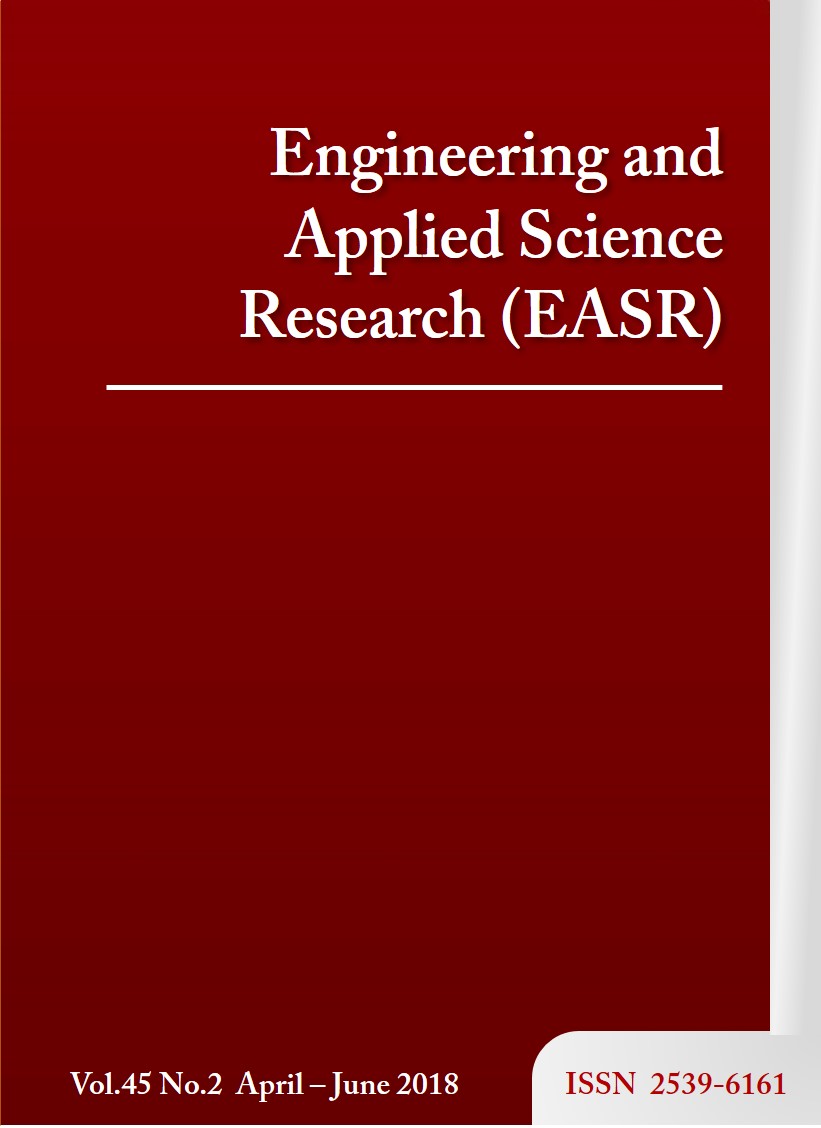Physico-mechanical behaviour of sandcrete produced with different proportions of sand grain sizes
Main Article Content
Abstract
The physical and mechanical properties of sandcrete produced with various blended proportions of sand grain sizes were investigated. River sand was sieved into three portionswith distinct grain sizes. Thesewere: sand containing only grains with diameters less than 1 mm (fine sand), 1-2 mm (medium sand) and 2-4 mm (coarse sand). Seven different combinations of grain sizes were proportioned by weight, with each combination containing 50% fine sand. Five cement/sand mix ratios, 1:4, 1:5, 1:6, 1:7 and 1:8, were used for moulding 150 × 150 × 150 mm sandcrete cubes . The results revealed that an increased proportion of coarse sand tended to increase the bulk density and compressive strength of sandcrete cubes after 28 days of curing. The grain size combination which gave the optimum compressive strength of sandcrete contained 50% fine sand, 10% medium sand and 40% coarse sand.
Article Details
This work is licensed under a Creative Commons Attribution-NonCommercial-NoDerivatives 4.0 International License.
References
Anya, C. U., Models for Predicting the Structural Characteristics of Sand-Quarry Dust Blocks, Unpublished Ph.D. thesis, University of Nigeria, Nsukka, 2015.
Anosike, M. N. and Oyebade, A. A., Sandcrete Blocks and Quality Management in Nigeria Building Industry, Journal of Engineering, Project, and Production Management, 2(1), 2012, pp.37-46.
Dhir, R. K., Hall, C., and Jackson, N., Bricks and Blocks, In: Jackson, N. and Dhir, R. K., Editors, Civil Engineering Materials, Palgrave, Basingstoke, 1996, pp. 493-526.
NIS 87:2004, Standards for Sandcrete Blocks, Standards Organisation of Nigeria, Lagos, 2004.
Abdullahi, M., Compressive Strength of Sandcrete Blocks in Bosso and Shiriro Areas Of Minna, Nigeria, AU Journal of Technology, 9(2), 2005, pp.126-132.
Mahmoud, H., Hamma, H. A. and Abba, H. A., Compressive Strength of Marketed Sandcrete Blocks Produced in Yola, Nigeria, Journal of Engineering and Applied Sciences, 2, 2010, pp.74 -81.
Olufasiyo, A. A., Strength Properties of Commercially Produced Sandcrete Blocks in Ado Ekiti, Akure and Ile Ife, International Journal of Engineering Science Invention, 2(8), 2013, pp.25-34.
Arimanwa, J. I., Arimanwa, M. C., Okere, C. E. and Awodiji, C. T. G., Assessment of the Quality of Sandcrete Blocks in Use in Owerri Imo State, South-East Nigeria, International Journal of Engineering and Innovative Technology, 3(10), 2014, pp.196-206.
Baiden, B. K. and Tuuli, M. M., Impact of Quality Control Practices in Sandcrete Block Production, Journal of Architectural Engineering, 10(2), 2004, pp.53-60.
Omoregie, A. and Alutu, O. E., The Influence of Fine Aggregate Combinations on Particle Size Distribution, Grading Parameters, and Compressive Strength of Sandcrete Blocks, Canadian Journal of Civil Engineering, 33(10), 2006, pp.12-17.
Oyekan, G. L., Single and Mixed Size Coarse Aggregates in Sandcrete Block Production. 33rd Conference on Our World in Concrete and Structures, Singapore, August 25-27, 2008.
http://cipremier.com/100033030 (Accessed 22nd June, 2017)
NIS 444-1:2003, Quality Standard for Ordinary Portland Cement – Part 1: Composition, Specification and Conformity Criteria for Common Cements, Standards Organisation of Nigeria, Lagos, 2003.
BS 410-1:2000, Test Sieves: Technical Requirements and Testing – Part 1: Test Sieves of Metal Wire Cloth, British Standards Institution, London, 2000.
BS EN 12620:2002, Aggregates for concrete, British Standards Institution, London, 2002.
BS EN 12390-3:2009, Testing Hardened Concrete – Compressive Strength of Test Specimens, British Standards Institution, London, 2009.



